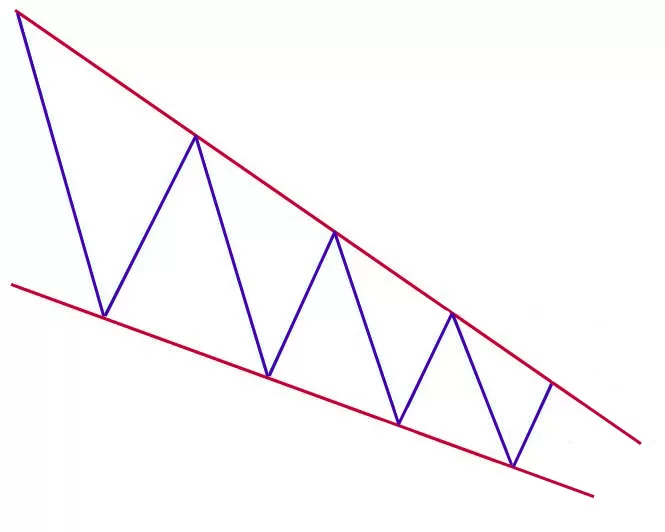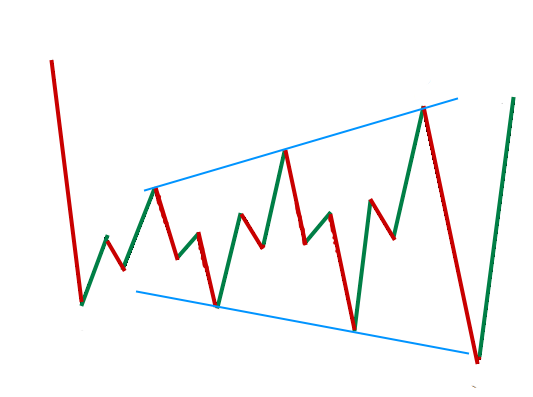Triangle chart patterns are valuable for identifying trends and predicting future market movements. These patterns, named for their triangular shape, provide traders with important insights into the dynamics of the market.
They can indicate the continuation of an existing trend or signal a potential reversal. In this comprehensive guide, we will explore the different types of triangle chart patterns, their characteristics, and how they can be used to inform trading decisions.
What are Triangle Chart Patterns?
Triangle chart patterns, also known as bilateral chart patterns, are formed when the price of a security moves into a narrower and narrower range over time. This narrowing range is a visual representation of a battle between bulls and bears in the market. The triangular shape is created by drawing two trendlines – an upper trendline connecting the highs and a lower trendline connecting the lows. These trendlines converge towards the apex, forming the triangle pattern.
Triangle patterns are similar to chart patterns, such as wedges and pennants. They can be categorized as either continuation patterns, indicating the resumption of a trend, or reversal patterns, suggesting a potential change in direction.
Traders use triangle patterns to identify when the trading range of security becomes narrow after a previous uptrend or downtrend. This narrowing range indicates a period of consolidation and can precede a breakout or breakdown.
There are three different types of triangle chart patterns: ascending triangles, descending triangles, and symmetrical triangles.
Each pattern has distinct characteristics and provides valuable information about the market’s future direction.
What is an Ascending Triangle?
Ascending triangles are bullish chart patterns that indicate a potential upside breakout. These patterns are formed when the upper trendline, representing resistance, remains flat while the lower trendline, representing support, slopes upwards. The ascending triangle pattern suggests that buyers are gradually gaining strength and pushing the price higher.
The ascending triangle pattern is created as the price of security bounces between the two trendlines. Each time the price meets resistance at the upper trendline, it pulls back but fails to reach the previous low. This series of higher lows indicates sellers are becoming less successful in lowering prices. Eventually, the price breaks above the resistance level, signaling the resumption of an uptrend.
To take advantage of an ascending triangle pattern, traders can place entry orders above the slope of the lower highs and below the slope of the higher lows. This allows them to ride the breakout in whichever direction the market moves. It is important to wait for a confirming breakout before entering a position and to set stop-loss orders below the low of the triangle pattern for risk management.
What is a Descending Triangle?
Descending triangles, on the other hand, are bearish chart patterns that suggest a potential downside breakout. These patterns are formed when the upper trendline, representing resistance, slopes downwards while the lower trendline, representing support, remains flat.
A descending triangle pattern develops as the security price makes lower highs, indicating that sellers are gaining control. Each attempt to push the price higher becomes less successful, and the price eventually breaks below the support level, confirming the bearish nature of the pattern.
Traders can take advantage of a descending triangle pattern by placing entry orders below the upper trendline and above the support level. Stop-loss orders should be set above the highest price reached during the formation of the triangle.
What is a Symmetrical Triangle?
Symmetrical triangles are consolidation patterns that indicate either a continuation of the existing trend or a potential trend reversal. These patterns are formed when the price of a security moves between converging trendlines, with both the upper and lower trendlines sloping towards each other.
In a symmetrical triangle pattern, the price bounces back and forth between the trendlines, gradually narrowing the trading range. Eventually, the price breaks out in one direction, indicating the market’s future trend.
If a symmetrical triangle follows an uptrend, a breakout below the ascending support line may signal a reversal to a downtrend. Conversely, if a symmetrical triangle follows a downtrend, an upside breakout above the descending resistance line may indicate a reversal to an uptrend.
Traders can use symmetrical triangles as a strong signal of future trend direction. Breakouts from these patterns often result in significant price movements. Stop-loss orders can be placed below the low of the triangle when buying or above the high when selling short.
Conclusion
Triangle chart patterns are powerful tools in a trader’s arsenal, providing valuable insights into market trends and potential reversals. By understanding the characteristics and signals of ascending, descending, and symmetrical triangles, traders can make more informed trading decisions.
It is important to wait for confirming breakouts, set appropriate entry and stop-loss orders, and manage risk effectively. Incorporating triangle chart patterns into technical analysis strategies can enhance a trader’s ability to navigate the dynamic and unpredictable nature of the market.
Remember, technical analysis is just one aspect of trading, and market conditions can change rapidly. It is important to stay updated on market news and trends and to refine your trading strategies continually. With practice and patience, triangle chart patterns can become a valuable tool in your trading toolkit.
Boost your trading success with FundedNext: Trade with up to $300,000 on a FundedNext Account and get up to 95% of the profits.
- 8 Best Prop Firms USA: Real trader Reviews and Payouts - March 10, 2025
- Forex Trading in Uganda: Start With $10—An Incredible Opportunity on a Tight Budget! - February 24, 2025
- Master Forex Trading Algorithms: Your Path to Success in 2025 - February 17, 2025








